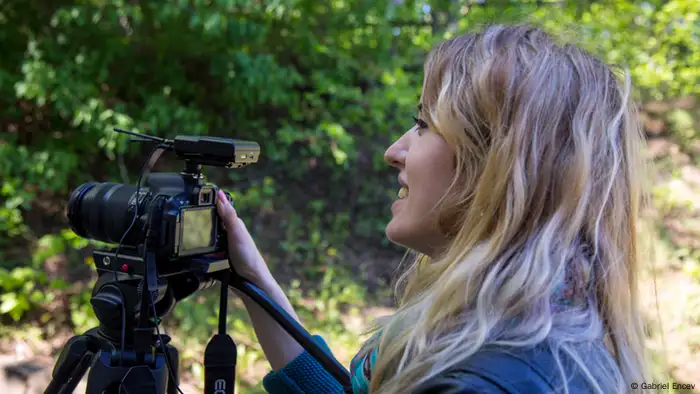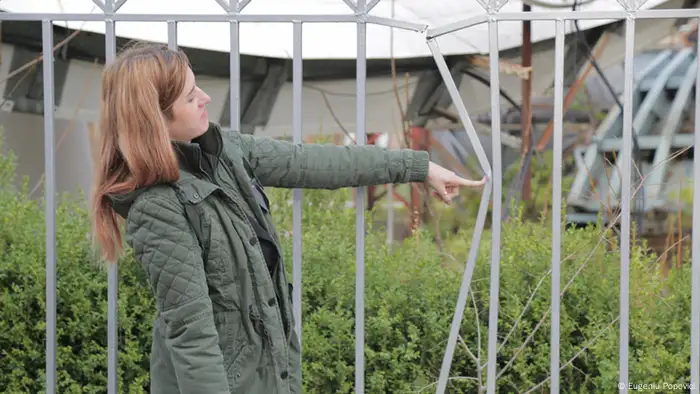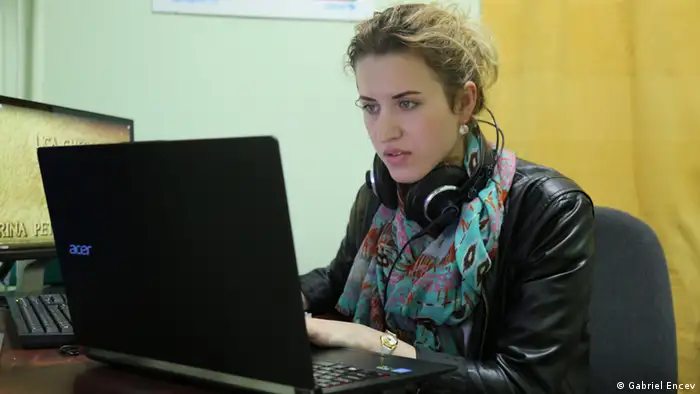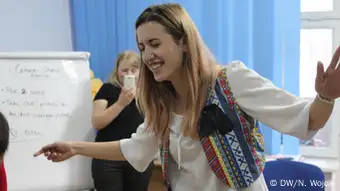Europe/Central Asia
Moldova: We lead youth to freedom
"Abrasive" by name, dynamic by nature. The weekly Moldovan youth program, produced entirely by Ana Gurdis and her team, is a breath of fresh air in a media landscape dominated by oligarchs.
When Ana Gurdis met him, the young man had just started a whole new chapter in his life. He'd spent 17 long years growing up in an orphanage where, although he had a disability that prevented him from walking, he was refused a wheelchair. So he spent his childhood and adolescence dragging himself along the floor - until he came to the attention of a charitable organization, which started helping him and provided much-needed operations.
Today the young man is 22, he's learning to walk and he'll soon be getting married. "It was a special interview for me," says Ana Gurdis. "He's had such a hard life, but he never cried or complained. He just smiled the whole time and seemed so happy and grateful." It's these kinds of experiences, says Ana Gurdis, that teach her more about herself - thanks to her interview partners. "They really change the way I think."
Ana Gurdis works at the Centrul Media pentru Tineri, a youth media center in Chisinau, capital of the Republic of Moldova. Together with a handful of colleagues, she puts together the 20-minute youth magazine 'Abraziv', or 'Abrasive'. She and two dozen other young people do their own camera-work, editing and presenting, and once a week they go on air at the public broadcaster, TRM. The magazine show addresses topics of interest to young people and experiments with crazy edits and fast music. "I recently had some feedback from older viewers who said that they'd never seen anything like 'Abraziv' before. And that was meant as a compliment." It's a fresh approach in the world of Moldovan television.
Our thoughts are free...
Ana is forceful and determined, and as the 22-year-old knows, she's working with a good team. Still, it's astonishing how a group of young, as- yet inexperienced video journalists with limited means can put together a complete, broadcast-worthy show every week. At the start, they were in the media center practically round the clock, but it’s much more routine now. "You can also sleep there," laughs Ana, who's been employed there for a year now and is finishing her Master's in Journalism at the same time.
In a sense, the youth media center represents an alternative voice in the Moldovan media landscape. The Ukraine crisis and the resulting tensions between Russia and the European Union (EU) are reflected in the increasing polarization of the media in Moldova. The most important national broadcasters are economically and politically dependent on their owners, some of whom are oriented towards Russia and some towards the West. This is the biggest reason for the extremely one-sided and uncritical reporting in the country. "But we're not directed by special interests," says Gurdis. "We offer young people freedom."
Ana Gurdis is staying!
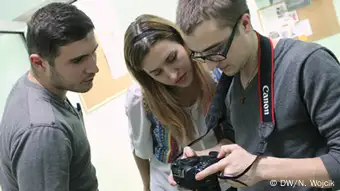
They're both producers and critics. Ana Gurdis and her colleagues at the youth media center, Centrul Media pentru Tineri
Trained by Deutsche Welle's media development organization, DW Akademie, Ana Gurdis and her team are now themselves training young people in media literacy. "We make them think and that gives them greater freedom," says Gurdis. She and her colleagues are showing the young people how to take a critical look at media coverage, especially when the reports are influenced by the opinions of the oligarchs. "We're getting great feedback. After our training, they really see the media differently."
Things aren't always easy in Moldova, one of the poorest countries in Europe. Many young people are leaving to try their luck in the wealthier EU countries. "I'm staying," says Ana Gurdis. "I'm exactly where I want to be and wouldn't want to swap this for anywhere else." She is certain that here in Moldova, she can have an impact and help bring about change.
DW recommends
WWW links
- Date 02.05.2016
- Author Nadine Wojcik / mc
- Feedback: Send us an e-mail. Please include your name and country in your reply.
- Print Print this page
- Permalink https://p.dw.com/p/1IgK0
- Date 02.05.2016
- Author Nadine Wojcik / mc
- All galleries in Media Center
- Send us your feedback.
- Print Print this page
- Permalink https://p.dw.com/p/1IgK0

